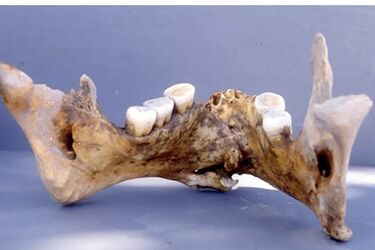Scientists: Byzantine surgeons in the 14th century knew how to treat jaw fractures with gold, guided by Hippocratic treatises

During archaeological work on the territory of a Greek fort in Western Thrace, scientists found the remains of a Byzantine soldier. All that remained of him was his skull, which lay in the grave of a five-year-old child.
This is reported by Naked Science.
According to scientists, the soldier died in 1380 during an attack on Byzantium by the Ottoman Turks. He was probably captured and then beheaded. He died at the age of 35-40. Someone secretly put his head in someone else's grave.
The most interesting thing about this skull was the jaw. It was broken in half and healed while the man was still alive.
The soldier wa injured 10 years before his death. The warrior was seen by a qualified doctor: examination of the jaw showed that it had remnants of a thin wire that was wrapped around the teeth during bone healing. Then it was removed.
The wire was probably gold, because there are no traces on the jaw. Silver would have left a gray coating, copper or bronze would have left a patina. We can conclude that the warrior had a high status if he could afford gold.
According to scientists, the surgeon who treated the jaw may have followed the instructions of Hippocrates, who wrote a treatise on such injuries in the fifth century BC.
As a reminder, archaeologists have found three sunken ships on the shoals of Skerki in the Mediterranean Sea.
If you want to get the latest news about the war and events in Ukraine, subscribe to our Telegram channel!
